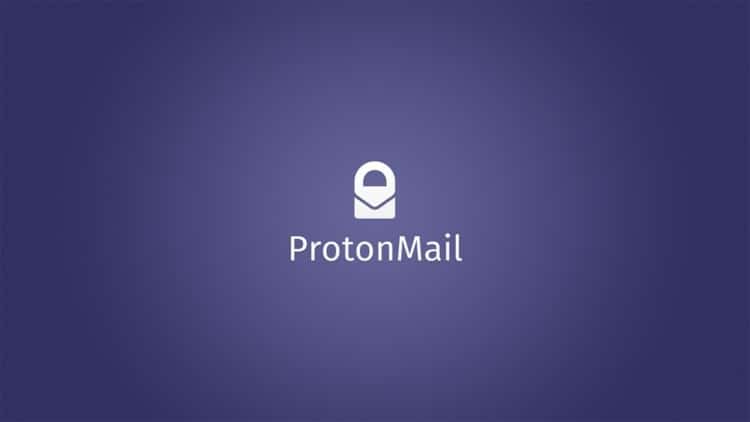As a seasoned CTO with a decade of experience in the tech industry, I know firsthand that one of the most crucial aspects of any successful tech venture is building a strong, agile team. The ability to adapt and respond to change quickly is essential in today’s fast-paced, ever-evolving tech landscape. With that in mind, I’d like to share my insights on how to build an agile team that can help your company achieve its goals and stay ahead of the competition.
Understanding the Core Principles of Agile
Embracing Change and Flexibility
One of the central tenets of the agile methodology is embracing change and flexibility. Agile teams recognize that change is inevitable, and they’re structured in such a way that they can quickly pivot and adapt to new challenges. As a CTO, it’s crucial to foster an environment where change is welcomed and not seen as a roadblock to success.
Focus on Collaboration and Communication
Agile teams thrive on collaboration and communication. This means that team members work closely together, share information, and hold regular meetings to ensure that everyone is on the same page. As a leader, it’s essential to encourage open communication and provide team members with the tools they need to collaborate effectively.
Hiring the Right People
Look for Team Players
When building an agile team, it’s essential to hire individuals who can work well with others and are willing to contribute to the team’s success. Look for candidates who have a history of collaboration, strong communication skills, and a willingness to help their teammates succeed.
Prioritize Adaptability and Learning
In an agile environment, team members need to be able to adapt quickly to new challenges and learn new skills. When hiring, prioritize candidates who demonstrate adaptability and a hunger for learning. Look for individuals with a diverse skill set and a proven ability to pick up new technologies quickly.
Common Mistakes to Avoid When Hiring Tech Professionals
Hiring the right tech professionals can be challenging, especially considering the unique characteristics of tech positions compared to other roles. Let’s explore some common mistakes that people make during the hiring process and how to avoid them.
Overemphasis on Technical Skills
While technical skills are undoubtedly important, focusing solely on a candidate’s technical abilities can lead to overlooking other essential qualities like communication, collaboration, and adaptability. To build a well-rounded agile team, it’s crucial to consider both technical and soft skills during the hiring process.
Solution: Develop a balanced evaluation process that assesses candidates’ technical expertise, problem-solving abilities, and soft skills, such as communication and teamwork.
Relying on Traditional Interviews
Traditional interviews may not accurately assess a candidate’s technical abilities, as they often focus on hypothetical situations and may not provide insights into the candidate’s hands-on experience.
Solution: Incorporate practical assessments, such as coding tests or pair programming sessions, to gauge candidates’ technical skills and problem-solving abilities in real-world scenarios.
Overvaluing Formal Education
While a strong educational background can be an asset, it shouldn’t be the sole determining factor when hiring tech professionals. Many talented individuals in the tech industry are self-taught or have acquired their skills through non-traditional educational paths.
Solution: Evaluate candidates based on their practical experience, portfolio of work, and demonstrated ability to learn new skills, rather than relying solely on formal education credentials.
Neglecting Cultural Fit
Cultural fit is crucial for building a cohesive agile team, yet it’s often overlooked during the hiring process. Hiring a candidate who doesn’t align with your company’s values and culture can lead to friction within the team and impede collaboration.
Solution: Assess candidates’ cultural fit by asking questions about their work style, values, and how they handle conflict. Consider involving potential team members in the hiring process to ensure a good fit from a cultural and team dynamic perspective.
Structuring Your Team for Success
Agile teams benefit from having members with diverse skills and backgrounds. This fosters cross-functional collaboration, where team members can draw on their various areas of expertise to solve problems and develop innovative solutions. As a CTO, it’s essential to encourage this cross-functional collaboration and ensure that team members have opportunities to work together on projects.
Implement Agile Frameworks
There are various agile frameworks, such as Scrum, Kanban, and XP, that you can implement to help structure your team for success.
Here’s a comparison table to help you understand the key differences and similarities between these frameworks:
| – | Scrum | Kanban | XP (Extreme Programming) |
|---|---|---|---|
| Focus | Iterative product development, time-boxed sprints, and self-organizing teams | Continuous flow, visualizing work, and limiting work in progress (WIP) | Rapid software development, embracing change, and high-quality code |
| Key Roles | Product Owner, Scrum Master, Development Team | No specific roles, but may include a team lead or coach | Coach, Tracker, Developer, Tester, Customer |
| Work Process | Time-boxed sprints with planning, review, and retrospective meetings | Continuous work, pull-based system, and managing WIP | Iterative development, continuous integration, and frequent releases |
| Artifact Management | Product Backlog, Sprint Backlog, Increment | Kanban Board (To-Do, In Progress, Done) | User Stories, Release Plan, Iteration Plan |
| Flexibility | Moderate – changes are made between sprints | High – changes can be made at any time | High – changes are embraced and incorporated rapidly |
These frameworks provide a clear set of guidelines and best practices that can help your team stay organized, prioritize tasks, and maintain a steady workflow. Choose a framework that best suits your team’s needs and make sure everyone is familiar with its principles.
Creating a Culture of Continuous Improvement
In an agile environment, it’s essential to create a culture of continuous improvement. This means encouraging team members to provide feedback, reflect on their performance, and identify areas where they can improve. As a CTO, it’s important to create an environment where team members feel comfortable sharing their thoughts and opinions and where their feedback is valued.
Invest in Professional Development
To maintain a high-performing agile team, it’s crucial to invest in ongoing professional development. This could include training, workshops, or conferences that allow team members to stay current with industry trends and develop new skills. By prioritizing professional development, you’re not only investing in the success of your team but also ensuring that your company remains competitive in the long run.
Here are some example websites that offer valuable resources, courses, and training opportunities to help your team stay current with industry trends and develop new skills:
- Pluralsight (https://www.pluralsight.com): Pluralsight is an online learning platform that offers a wide range of technology and business courses, including topics like software development, data science, and IT operations. With a subscription, your team members can access expert-led courses, skill assessments, and learning paths tailored to their specific needs.
- Coursera (https://www.coursera.org): Coursera partners with top universities and organizations to offer a variety of online courses and professional certificate programs. Your team members can enroll in individual courses or pursue more comprehensive programs in areas such as Agile Project Management, Data Science, and Software Engineering.
- Udemy (https://www.udemy.com): Udemy is an online learning marketplace with over 130,000 courses covering a wide range of topics, including web development, programming languages, and Agile methodologies. Your team members can purchase courses individually or you can set up a Udemy for Business account to provide access to curated learning paths and content.
- LinkedIn Learning (https://www.linkedin.com/learning/): LinkedIn Learning (formerly Lynda.com) offers a vast library of video courses taught by industry experts. With topics ranging from Agile Foundations to more advanced Agile practices, your team members can expand their skillsets and even earn certifications to showcase their expertise.
- Agile Alliance (https://www.agilealliance.org): As a global nonprofit organization dedicated to promoting Agile principles and practices, Agile Alliance provides a wealth of resources, including articles, webinars, and conference information. They also offer an Agile Coaching Network, where your team members can join interactive, online sessions to learn from experienced Agile practitioners.
Measuring Success and Adjusting Your Approach
To effectively measure the success of your agile team, it’s essential to set clear goals and metrics that align with your company’s overall objectives. By establishing key performance indicators (KPIs), you can track your team’s progress and make data-driven decisions to adjust your approach as needed. Remember to involve your team in the goal-setting process, as this fosters a sense of ownership and accountability.
Conduct Regular Retrospectives
Retrospectives are an important aspect of the agile methodology, as they provide an opportunity for the team to reflect on their performance and identify areas for improvement. Conducting regular retrospectives allows you to make adjustments to your team’s processes and practices, ensuring that you’re continuously optimizing for efficiency and effectiveness.
Agile vs. Other Methodologies
In order to fully appreciate the benefits of the agile approach, it’s important to compare it with other popularmethodologies. In this section, we’ll take a closer look at some of the key similarities and differences between agile and other methodologies, such as Waterfall, Lean, and Six Sigma.
Waterfall
The Waterfall model is a linear, sequential approach to project management, where each phase of the project must be completed before moving on to the next. This methodology is often used in software development and other engineering projects, but it lacks the flexibility and adaptability of the agile approach.
| – | Agile | Waterfall |
|---|---|---|
| Flexibility | High – easily adapts to change | Low – rigid and inflexible |
| Team Collaboration | High – emphasizes communication and collaboration | Moderate – collaboration is limited to specific project phases |
| Risk Management | High – frequent iterations allow for early detection of issues | Low – risks are addressed late in the project, leading to potential delays and cost overruns |
| Feedback | Continuous – short feedback loops ensure constant improvement | Periodic – feedback is gathered at the end of each phase |
Lean
Lean is a management philosophy that focuses on minimizing waste, maximizing value, and improving efficiency. While it shares some similarities with agile, such as an emphasis on collaboration and continuous improvement, Lean’s primary focus is on optimizing processes and reducing waste.
| – | Agile | Lean |
|---|---|---|
| Focus | Flexibility, adaptability, and customer satisfaction | Efficiency, waste reduction, and process optimization |
| Team Collaboration | High – emphasizes communication and collaboration | High – cross-functional teams collaborate to optimize processes |
| Risk Management | High – frequent iterations allow for early detection of issues | Moderate – risks are managed through continuous improvement |
| Feedback | Continuous – short feedback loops ensure constant improvement | Continuous – Lean uses a Plan-Do-Check-Act cycle to gather and act on feedback |
Six Sigma
Six Sigma is a data-driven methodology that aims to improve business processes by minimizing defects and variability. This approach is often used in manufacturing and other industries where quality control is a top priority. While Six Sigma emphasizes continuous improvement, it lacks the flexibility and adaptability found in the agile methodology.
| – | Agile | Six Sigma |
|---|---|---|
| Focus | Flexibility, adaptability, and customer satisfaction | Quality control, defect reduction, and process improvement |
| Team Collaboration | High – emphasizes communication and collaboration | Moderate – collaboration is often limited to specific project phases |
| Risk Management | High – frequent iterations allow for early detection of issues | Moderate – risks are managed through data-driven process improvement |
| Feedback | Continuous – short feedback loops ensure constant improvement | Periodic – feedback is gathered at specific points in the Six Sigma process |
Building an agile team is a multifaceted process that involves hiring the right people, fostering a culture of collaboration and continuous improvement, and implementing the appropriate frameworks and processes.
By following the guidance provided, you can create a high-performing agile team that’s well-equipped to adapt to change and drive your company’s success in the ever-evolving tech landscape. Remember, an agile team is an ongoing journey of growth and adaptation, so stay committed to nurturing and supporting your team members as they help your company achieve its goals.






